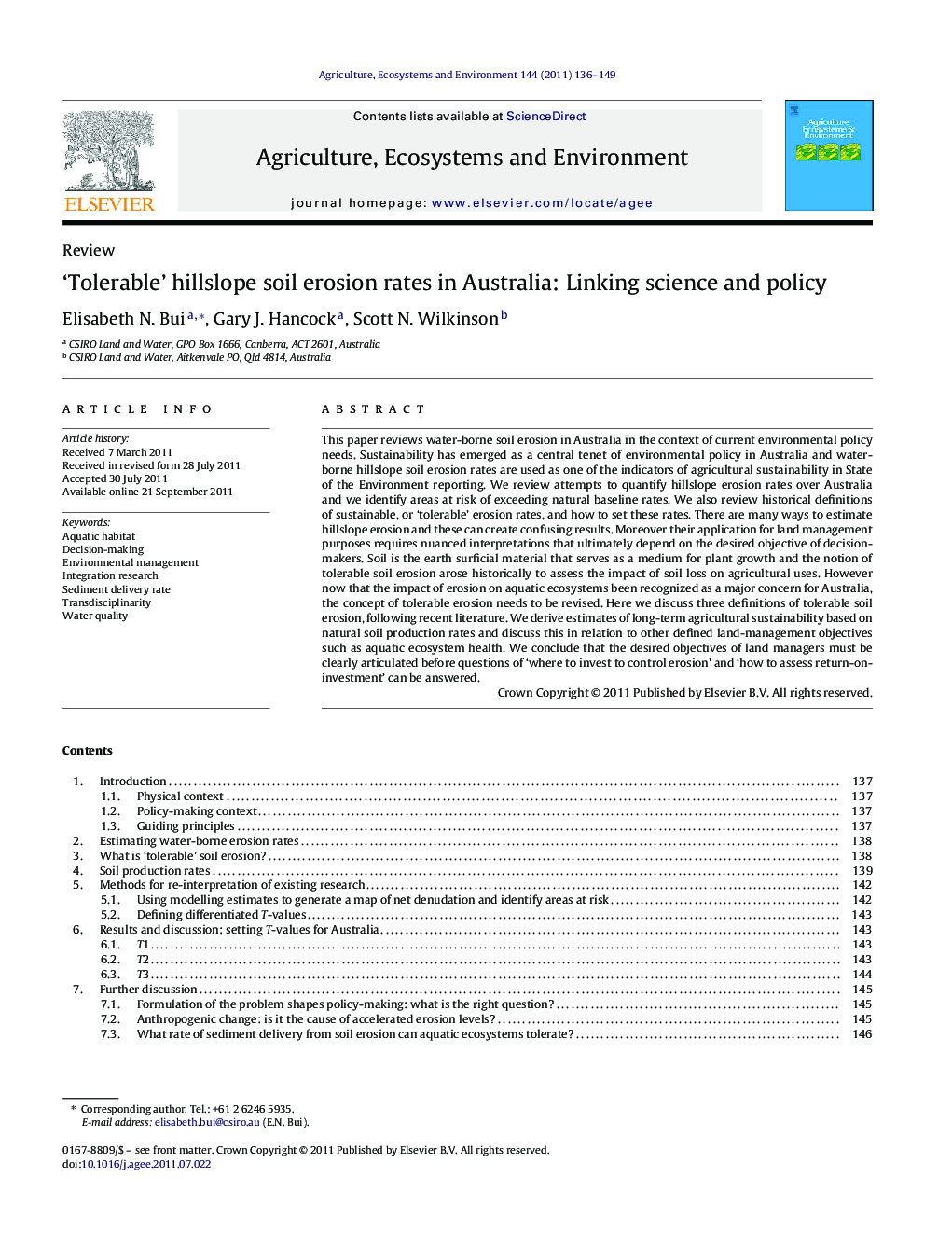| Article ID | Journal | Published Year | Pages | File Type |
|---|---|---|---|---|
| 2414763 | Agriculture, Ecosystems & Environment | 2011 | 14 Pages |
This paper reviews water-borne soil erosion in Australia in the context of current environmental policy needs. Sustainability has emerged as a central tenet of environmental policy in Australia and water-borne hillslope soil erosion rates are used as one of the indicators of agricultural sustainability in State of the Environment reporting. We review attempts to quantify hillslope erosion rates over Australia and we identify areas at risk of exceeding natural baseline rates. We also review historical definitions of sustainable, or ‘tolerable’ erosion rates, and how to set these rates. There are many ways to estimate hillslope erosion and these can create confusing results. Moreover their application for land management purposes requires nuanced interpretations that ultimately depend on the desired objective of decision-makers. Soil is the earth surficial material that serves as a medium for plant growth and the notion of tolerable soil erosion arose historically to assess the impact of soil loss on agricultural uses. However now that the impact of erosion on aquatic ecosystems been recognized as a major concern for Australia, the concept of tolerable erosion needs to be revised. Here we discuss three definitions of tolerable soil erosion, following recent literature. We derive estimates of long-term agricultural sustainability based on natural soil production rates and discuss this in relation to other defined land-management objectives such as aquatic ecosystem health. We conclude that the desired objectives of land managers must be clearly articulated before questions of ‘where to invest to control erosion’ and ‘how to assess return-on-investment’ can be answered.
► We review estimates of water-borne erosion in Australia in the context of current environmental policy needs. ► We also review historical definitions of sustainable, or ‘tolerable’ erosion rates. ► We quantify hillslope erosion rates over Australia and we identify areas at risk of exceeding natural baseline rates. ► We discuss hillslope erosion rates in relation to other defined land-management objectives such as aquatic ecosystem health.
